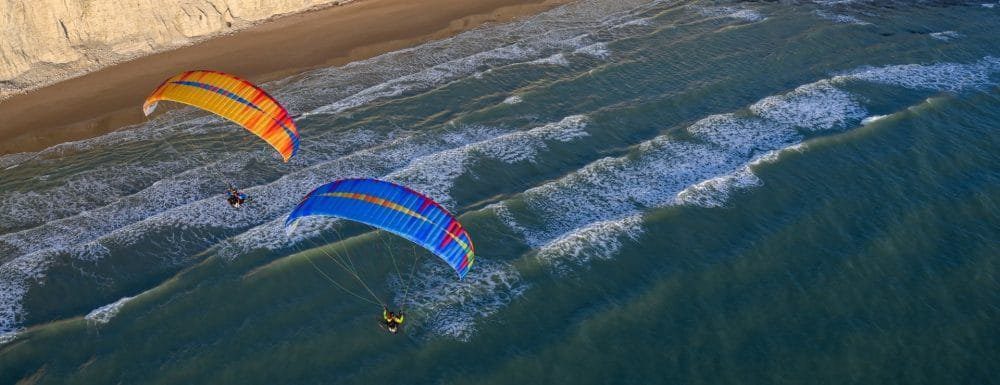
What gear do you need to do speed flying?
Speed flying in paragliding is an exhilarating and thrilling experience for any outdoor enthusiast. This type of airborne adventure requires different gear and equipment compared to regular paragliding. Knowing what gear you need to do speed flying can help ensure your safety and make the most out of this experience. In this article, we will discuss the essential pieces of equipment and gear that you need to be able to take part in speed flying with paragliding safely.
Speed Flying in Paragliding
Speed flying is an exciting form of paragliding that combines the thrill of soaring through the skies with the sensation of reaching incredible speeds. It’s a relatively new sport, first gaining traction in Europe in the late 1990s, and has since grown into an adrenaline-filled activity enjoyed by thrill-seekers from around the world.
Speed flying requires special equipment including a speed glider – a modified paraglider designed for more agile maneuvering and quick acceleration. The gliders are smaller than traditional parachutes and provide exceptional performance when it comes to navigating tight turns, performing loops, and diving quickly toward the ground. Speed flyers also make use of specialized helmets equipped with small cameras to capture their rides on film.
Basic Equipment
If you are interested in taking up this thrilling activity, it is important to understand what basic equipment you need for speed flying in paragliding.
The main piece of equipment needed for speed flying in paragliding is a wing or canopy. This should be specially designed for high speeds and maneuverability, so make sure it meets these requirements before making your purchase. We love the SKYWALK SPICE2 PARAGLIDER and the ADVANCE SIGMA 11. Additionally, you will need a harness to attach yourself to the wing securely and safely and also a helmet to protect your head from impact. Parachutes may also be recommended as an extra safety precaution should anything go wrong during the flight.
Helmet and Goggles
Speed Flying is a fast-growing aerial sport that requires the use of both helmet and goggles. A combination of paragliding and skydiving, Speed Flying gives participants the unique opportunity to experience soaring through the air at high speeds. Participants don special helmets with integrated eye protection. Seeing and being able to react and orient yourself in the air is super important in speed flying! These two items are very necessary anytime before leaping from a mountain or other high-elevation location. Safety first!
Harness
Speed flying requires the use of a harness to keep the pilot safe and secure while enjoying the ride. It is essential that pilots equip themselves with an appropriate harness for speed flying in order to ensure optimum safety.
Harnesses are designed to provide comfort and stability for fliers, allowing them to focus more on their flight path than on worrying about their safety. They also help distribute weight evenly across the body and provide superior protection from falls or sudden changes in direction during speed flights. Harnesses also assist with regulating body temperature as they protect against wind chill while soaring in high altitudes.
Reserve Parachute
While it may seem like there are few risks associated with speed flying, having a reserve parachute is essential for safety.
A reserve parachute is designed to be used as an emergency measure in case of an unexpected problem during your flight. It can be deployed quickly and will bring you down safely from any altitude. Without one, it would be impossible to escape from dangerous situations such as turbulence or mechanical failure at higher altitudes. Additionally, if the wind suddenly changes direction or increases in strength during your flight, a reserve parachute can provide additional stability and help slow down your descent rate for a safer landing.
Clothing
Selecting specialized clothing can help to create an aerodynamic effect that allows the participant to travel at higher speeds than regular paragliding.
The clothing worn by participants is made from a lightweight material such as nylon or lycra, which helps reduce air resistance and increase speed. Remember when selecting clothing to dress for the weather and the temperature of the air at higher altitudes!
You have everything – so what next?
Once you have all the right gear – you can get airborne! Pilots will then ride thermals created by heated air rising off the ground in order to stay aloft for extended periods of time. With practice and training, pilots can learn how to control their speed through strategic maneuvers such as changing angles, turning in circles, or even flying inverted (upside-down). Ultimately, experienced Speed Flyers are able to reach speeds up to 100 mph while maintaining direct control over their flight path!
Now that sounds like some pretty speedy flying!






